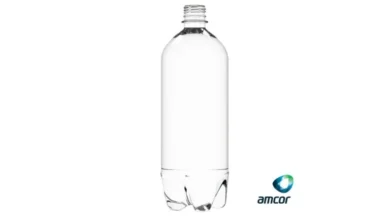Reduced health risks with new epoxy resin monomer

Baspar/Iranpolymer Epoxy resin monomers used in industry can result in severe contact allergies. Researchers at the University of Gothenburg have now developed a new type of epoxy resin monomer that is far less allergenic and is based on a renewable material. The epoxy resin monomers used today contain residues of the endocrine disruptor Bisphenol A (BPA). The new monomer derived from ordinary sugar is not based on BPA. epoxy resin monomers have been used for a long time in the construction industry and, more recently, in the production of the plastics used in wind turbines. The monomer is produced from BPA, which is derived from petroleum. The risk of developing a contact allergy when handling epoxy resin monomers is considerable, and sometimes it is not even enough to wear protective clothing. “When we started our research, we had three goals. The monomer should be far less allergenic, be based on an easily accessible and renewable starting material, and not based on BPA, which is a known endocrine disruptor,” says Kristina Luthman, Professor of Medicinal Chemistry at the University of Gothenburg.
Hazardous residues remain in the polymer
Epoxy resin polymers are formed by allowing two substances to react with each other. One of these substances, called DGEBA (Bisphenol A diglycidyl ether), is reactive and helps to produce durable and cured plastics. But even after curing, the epoxy resin polymer still has residues of the contact allergenic DGEBA and the endocrine disruptor BPA, both of which entail health risks. Researchers at the University of Gothenburg have now developed a new epoxy resin monomer based on isosorbide, which is a substance produced from glucose—in other words, ordinary sugar. Those who handle the epoxy resin monomers will gain most from this research. “If the monomer is less allergenic, this is of great practical importance. It may then be enough to wear protective clothing, which is not always the case today,” says Kristina Luthman.
Cheap input material
Another advantage of the new material is that it is made from a renewable starting material (sugar beet), and not fossil oil as is the case with today’s epoxy resin monomers. The next step will be to test the monomer produced and see if it has the right properties for use as a substitute for today’s epoxy resin monomers in industrial applications. As it is derived from sugar, the material is cheap. “Usability and cost-effectiveness will be questions for the plastics industry to address. One obstacle is that BPA is cheap and useful for creating plastics with a variety of properties. So it may be difficult to convince industry to make the switch. But if the use of BPA is regulated more strictly within the EU, that will put the matter in a whole different light,” says Kristina Luthman.
phys.org






